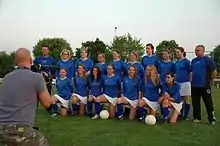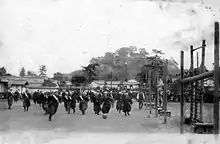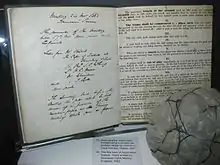| Main page | Categories & Topics | WikiProjects & Things you can do |
The Association football portal
Association football, more commonly known as football or soccer, is a team sport played between two teams of 11 players each, who primarily use their feet to propel a ball around a rectangular field called a pitch. The objective of the game is to score more goals than the opposing team by moving the ball beyond the goal line into a rectangular-framed goal defended by the opposing team. Traditionally, the game has been played over two 45-minute halves, for a total match time of 90 minutes. With an estimated 250 million players active in over 200 countries and territories, it is the world's most popular sport.
The game of association football is played in accordance with the Laws of the Game, a set of rules that has been in effect since 1863 and maintained by the IFAB since 1886. The game is played with a football that is 68–70 cm (27–28 in) in circumference. The two teams compete to get the ball into the other team's goal (between the posts and under the bar), thereby scoring a goal. When the ball is in play, the players mainly use their feet, but may use any other part of their body, except for their hands or arms, to control, strike, or pass the ball. Only the goalkeepers may use their hands and arms, and only then within the penalty area. The team that has scored more goals at the end of the game is the winner. Depending on the format of the competition, an equal number of goals scored may result in a draw being declared, or the game goes into extra time or a penalty shoot-out.
Internationally, association football is governed by FIFA. Under FIFA, there are six continental confederations: AFC, CAF, CONCACAF, CONMEBOL, OFC, and UEFA. Of these confederations, CONMEBOL is the oldest one, being founded in 1916. National associations (e.g. The FA or JFA) are responsible for managing the game in their own countries both professionally and at an amateur level, and coordinating competitions in accordance with the Laws of the Game. The most senior and prestigious international competitions are the FIFA World Cup and the FIFA Women's World Cup. The men's World Cup is the most-viewed sporting event in the world, surpassing the Olympic Games. The two most prestigious competitions in European club football are the UEFA Champions League and the UEFA Women's Champions League, which attract an extensive television audience throughout the world. Since 2009, the final of the men's tournament has been the most-watched annual sporting event in the world. (Full article...)
Selected article
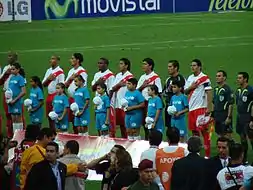
Throughout its history, the Peruvian team's performance has been inconsistent. The side's early years saw World Cup participations and victories in the 1938 Bolivarian Games and the 1939 Copa América. Its 1950s side, which included Alberto Terry and Valeriano López, was considered to be among the top 20 strongest footballing nations of the decade, despite not winning any major tournaments. The golden generation of Peruvian football in the 1970s brought Peru back into the world view, with greats such as Héctor Chumpitaz, Hugo Sotil, and Teófilo Cubillas leading to the belief that a new footballing powerhouse had emerged. This team qualified Peru for three FIFA World Cups, and won the Copa América in 1975.
Peru's most recent appearance in the final stages of an international competition was at the 1982 World Cup; the national team has not seen a major tournament victory or World Cup participation in over 27 years and was also temporarily suspended from international participation by FIFA in late 2008 due to allegations of corruption between government sport authorities and the FPF. (Full article...)
Selected biography
Frank Barson (10 April 1891 – 13 September 1968) was an English footballer born in Grimesthorpe. He started life as a blacksmith, and began his football career with Sheffield amateur clubs Albion FC and Cammell Laird's before joining Barnsley in 1911. He went on to play for a number of clubs in English football including Manchester United and Aston Villa, with whom he won the FA Cup in 1920.
Barson was known as one of the most feared players of his era, and had a reputation as a "hard man" of English football. On frequent occasions Barson was escorted out of grounds by policemen to protect him from mobs of angry opposition fans and he was once banned from the game for seven months for a challenge in a match against Fulham.
He played up until the age of 39, eventually signing on as an amateur with Wigan Borough and his last ever appearance as a player was in a game against Accrington Stanley on Boxing Day 1930 in which he was sent off in the 83rd minute. (Full article...)
Selected association
All India Football Federation (AIFF) is the national governing body of football in India. It is a member of FIFA, the international governing body of football, and is affiliated with the Asian Football Confederation and South Asian Football Federation. This federation also manages Futsal and Beach Soccer in India.
It is affiliated to the Ministry of Youth Affairs and Sports, Government of India. India men's and women's football teams are governed by the AIFF, represent India in various international football tournaments. (Full article...)
Did you know (auto-generated) -
- ... that Welsh footballer Jon Morgan went on to become a college principal after retiring?
- ... that Irish sportswoman Carol Breen has played internationally in both association and Australian rules football?
- ... that goalkeeper Sophie Whitehouse, who has lived in England, Africa and the US, has been chosen to play soccer for the Republic of Ireland?
- ... that footballer Billy Hardy is Cardiff City F.C.'s record appearance holder, having played in 590 matches between 1911 and 1932?
- ... that Carlton Town F.C., now competing at the eighth tier of the English football pyramid, was once denied promotion by a hat-trick scored by future England international Jamie Vardy?
- ... that Ryan Roberts, a defensive end for Notre Dame, was a soccer player in high school?
- ... that Ecuadorian footballer Hernán Galíndez won a bicycle for beating a team featuring Lionel Messi when they were children?
- ... that after his soccer career, Steve Palacios enlisted in the United States Army and played for the United States Armed Forces soccer team?
Selected image

Selected quote
General images -
Selected World Cup
The 1954 FIFA World Cup was the fifth edition of the FIFA World Cup, the quadrennial international football tournament for senior men's national teams of the nations affiliated to FIFA. It was held in Switzerland from 16 June to 4 July. Switzerland was selected as the host country in July 1946. At the tournament several all-time records for goal-scoring were set, including the highest average number of goals scored per game. The tournament was won by West Germany, who defeated tournament favourites Hungary 3–2 in the final for their first World Cup title. Uruguay the defending champions were eliminated by World Cup finalist Hungary and would lose to Austria in a third place match.
The highest scoring match of a World cup happened in the Quarterfinals of this tournament, when Austria defeated hosts Switzerland 7-5. The 12 goals of that match has never been surpassed in a World Cup since. (Full article...)Selected topic
|
Topic discussion 8 articles | ||||
|---|---|---|---|---|
| ||||
More did you know -
- ... that Billy Kee was going to include "Wembley" in the name of his child who was being born during the 2014 Football League Two play-off Final if he scored? (11 February 2021)
- ... that AFC Wimbledon were promoted for a sixth time since their formation in 2002 when they won the 2016 Football League Two play-off Final? (6 February 2021)
- ... that while at Fiorentina, Mohamed Salah chose the shirt number 74 in honour of the victims of the Port Said Stadium riot (15 March 2021)
- ... that Andy Crosby captained Scunthorpe United to victory in the 2009 League One play-off Final, the last match of his 715-game career? (31 March 2021)
- ... that Coventry City's winning goal in the 1987 FA Cup Final was an own goal scored in extra time off Gary Mabbutt's knee? (30 January 2021)
- ... that Tranmere Rovers players were each promised a £10,000 bonus for winning the 1991 Football League Third Division play-off Final? (12 April 2021)
Association football portals
More sports portals
Associated Wikimedia
The following Wikimedia Foundation sister projects provide more on this subject:
-
 Commons
Commons
Free media repository -
 Wikibooks
Wikibooks
Free textbooks and manuals -
 Wikidata
Wikidata
Free knowledge base -
 Wikinews
Wikinews
Free-content news -
 Wikiquote
Wikiquote
Collection of quotations -
 Wikisource
Wikisource
Free-content library -
 Wikiversity
Wikiversity
Free learning tools -
 Wiktionary
Wiktionary
Dictionary and thesaurus
More portals
-
 List of all portals
List of all portals -

-

-

-

-

-

-

-

-

-
 Random portal
Random portal -
 WikiProject Portals
WikiProject Portals

.jpg.webp)
.jpg.webp)

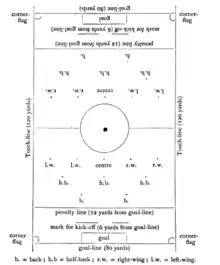
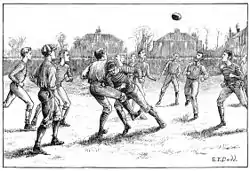
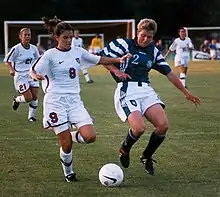

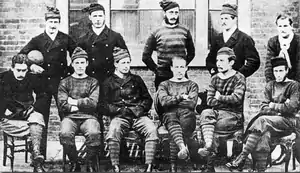
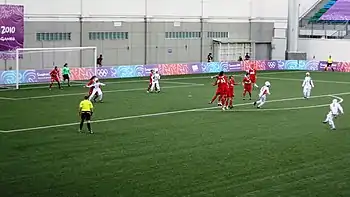
_(14777984175).jpg.webp)

